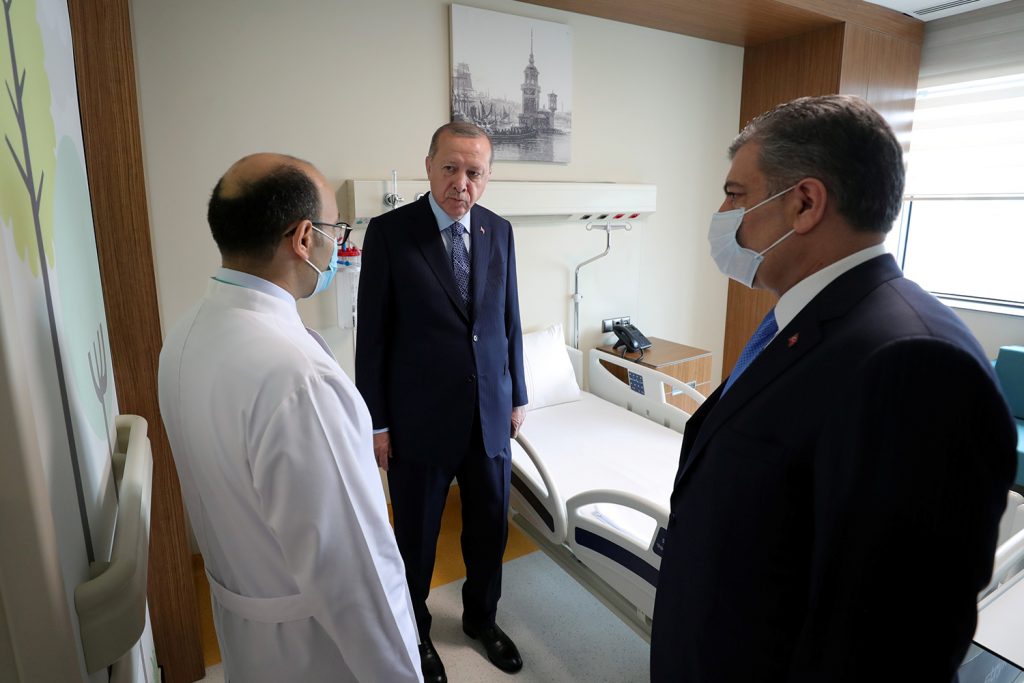
In early March, I expected a full-blown health crisis in Turkey. No one seemed to be taking COVID-19 seriously. Few in my work and social circles were fazed by media reports about the virus spreading devastatingly to neighboring Iran, Italy, and Spain.
Meanwhile, the central government in Ankara did not officially report any cases or deaths from COVID-19 in Turkey until March 11, which seems unreliable. When, on March 13, I asked my team at a small environmental solutions company to work from home for the next week, I got the sense that they thought I was probably overreacting. After all, it was another two days before the Turkish government announced the first COVID-19 death in the country.
The next day, I was overcome with anxiety when I met with a senior Turkish government official at an outdoor cafe along the Bosphorus. As news poured in that hospitals in Lombardy and Madrid were overwhelmed, the establishment was packed with people exchanging traditional greetings: hugs and kisses on the cheek. The only person who seemed to understand the gravity of the situation was a friend at the top of his administration in Ankara, who was the first to shake elbows with me as we sat down. He delivered the frightening news, solemnly but honestly: “At this point, we have no idea how big the problem is.”
Of course, my immediate emotional reaction was fear. I imagined the coronavirus already raging in the suburban neighborhoods of Istanbul where the majority of Turkey’s 3.7 million Syrian refugees live, swarming with “migrants” from Turkey’s provinces, all of us crowded together in this megacity of over 15 million people.
And at first, my fears seemed warranted. In the weeks that followed, Turkey recorded the highest COVID-19 infection rate in the world. Dire rumors circulated on Turkish social media about coronavirus patients continuing to stream into hospitals while all of Istanbul’s intensive care unit (ICU) beds were filled.
But in retrospect, I see that the caution and clarity my friend showed in that Bosphorus cafe reflected Turkey’s general response to the pandemic. Perhaps surprisingly, in April 2019, 11 months before the first coronavirus cases were officially reported, the government published a 229-page plan for pandemic preparedness.
And when COVID-19 hit Turkey, Ankara stuck to its plan.
On March 13, two days after the first coronavirus case was reported and two days before the first death, the Turkish government closed all schools in the country. Four days later, all restaurants, bars, cafes and gyms were closed.
Next, people over 65, who are the most susceptible to coronavirus, were confined to their homes indefinitely, followed by an indefinite 24-hour curfew on people under the age of 21, who also put the virus at greatest risk.
To isolate the most vulnerable and at-risk people, Ankara has indefinitely banned entry and exit from 31 major Turkish municipalities, except for goods.
Eventually, the government implemented nationwide weekend lockdowns in April and May, which were usually extended to four days.
So far, the strategy seems to be working. Unlike Madrid, Lombardy, or New York City, Turkey’s health care system has not been overwhelmed by COVID-19 patients, and the world’s steepest coronavirus infection curve is now in steep decline. Moreover, Turkey’s economy has avoided the devastating shutdowns seen in the United States and most of Europe, while restaurants and cafes are only just beginning to reopen.
These figures also speak to the relative success of the Turkish government’s risky strategy of implementing limited lockdowns, plus social distancing, testing, and tracing. According to Johns Hopkins University, as of May 26, Turkey’s COVID-19 mortality rate (the percentage of deaths among all cases) was 2.8%. This compares to 5.9% in the United States, 12.2% in Spain, 14.1% in the United Kingdom, 14.3% in Italy, and 15.5% in France. Meanwhile, Turkey has 5.27 deaths per 100,000 people. The corresponding figures for the United States are 29.87, 42.35 in France, 54.25 in Italy, 55.46 in the United Kingdom, and 61.54 in Spain.
Of course, the Turkish government cannot claim all the credit. As Evren Balta and Soli Özer point out in their Institut Montaigne study, several other aspects of Turkish culture and economy have helped mitigate the impact of COVID-19. First, Turkey has a predominantly young population. Second, Turkey has very few nursing homes, and the elderly are generally cared for at home by family members. Third, Turkey has an unusually large number of ICU beds in private hospitals, but this appears to be the result of private hospital operators rigging Turkey’s national healthcare system rather than careful government planning. Fourth, around 60% of Turkey’s COVID-19 cases occurred in Istanbul, which has the largest number of ICU beds.
But despite these warnings, the Turkish government appears to have made good on its promises: Health Minister Fahrettin Koca has been praised by critics for the clarity, transparency and credibility of his near-daily televised briefings, and President Recep Tayyip Erdogan has urged Turks to practice social distancing during the peak of the Eid al-Fitr holiday.
In summary, Turkey may have found a way to keep its economy partially or largely open while keeping COVID-19 under control, but it still has a long way to go. Perhaps it could learn something from Ankara’s hard-line president, as U.S. President Donald J. Trump appears to have a genuine respect for Erdogan.
Matthew Bryza is a senior fellow at the Atlantic Council Global Energy Center. He served as U.S. diplomat for more than 20 years, including as U.S. Ambassador to Azerbaijan and Assistant Secretary of State for European and Eurasian Affairs. You can follow him on Twitter: @BryzaMatthew.
The views expressed on TURKEYSource are solely those of the authors and do not necessarily reflect the views of the Atlantic Council, its staff, or its supporters.
References:
Photo: Turkish President Erdogan, accompanied by Health Minister Fahrettin Koca, inspects the Başakşehir City Hospital, jointly built by Turkish and Japanese companies, in Istanbul, Turkey, on May 21, 2020. Turkish Presidential Press Office/Courtesy of Reuters


